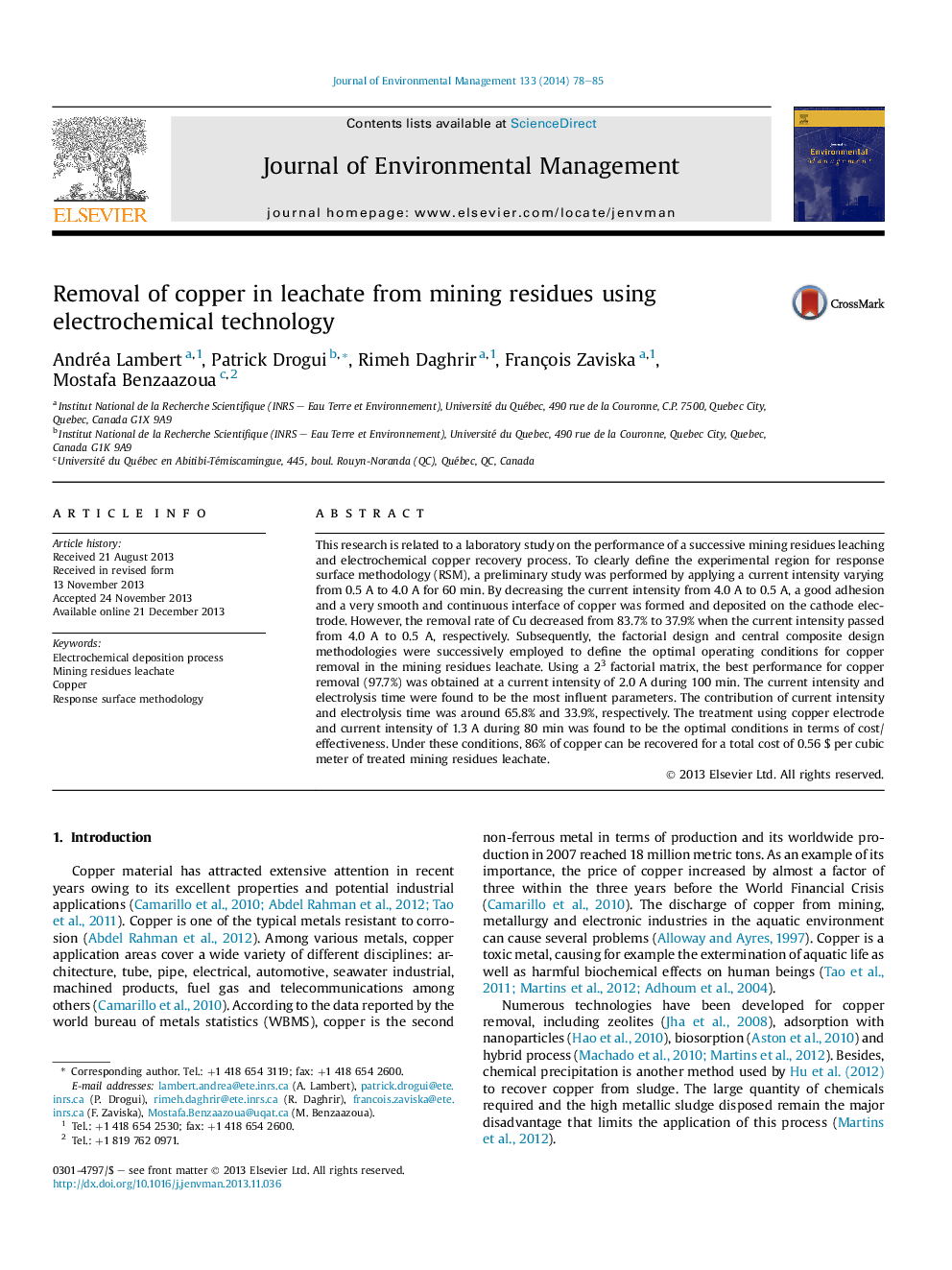| Article ID | Journal | Published Year | Pages | File Type |
|---|---|---|---|---|
| 1055827 | Journal of Environmental Management | 2014 | 8 Pages |
•An electrochemical process was used to recover Cu in leachate from mining residues.•FD and CCD methodologies have been successively applied to optimize the process.•Current intensity and time influence the electrochemical deposition of Cu.•Their contribution on Cu removal is 65.8% and 33.9%, respectively.•Under optimal conditions, 86% of Cu can be recovered from MRL.
This research is related to a laboratory study on the performance of a successive mining residues leaching and electrochemical copper recovery process. To clearly define the experimental region for response surface methodology (RSM), a preliminary study was performed by applying a current intensity varying from 0.5 A to 4.0 A for 60 min. By decreasing the current intensity from 4.0 A to 0.5 A, a good adhesion and a very smooth and continuous interface of copper was formed and deposited on the cathode electrode. However, the removal rate of Cu decreased from 83.7% to 37.9% when the current intensity passed from 4.0 A to 0.5 A, respectively. Subsequently, the factorial design and central composite design methodologies were successively employed to define the optimal operating conditions for copper removal in the mining residues leachate. Using a 23 factorial matrix, the best performance for copper removal (97.7%) was obtained at a current intensity of 2.0 A during 100 min. The current intensity and electrolysis time were found to be the most influent parameters. The contribution of current intensity and electrolysis time was around 65.8% and 33.9%, respectively. The treatment using copper electrode and current intensity of 1.3 A during 80 min was found to be the optimal conditions in terms of cost/effectiveness. Under these conditions, 86% of copper can be recovered for a total cost of 0.56 $ per cubic meter of treated mining residues leachate.
